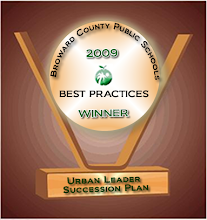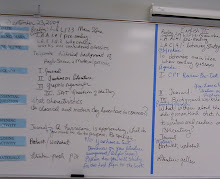Henry David Thoreau said, “Write while the heat is in you.” That might be well and good for an aspiring writer, but for teachers preparing their students to take the FCAT Writing—the heat is on them!
Now is the time for you to check and see what your teachers have in place for the last weeks prior to the FCAT Writing test. All English Department Heads received handouts and powerpoints from curriculum to distribute to all English and Language Arts teachers.
The secondary materials included a Homestretch Plan for HS FCAT Writing—10 Days of Activities and Lessons. Check with your department head to find out how teachers at your school plan to implement the materials.
You might want to ask some of the following questions:
• Are students using FCAT Writing Rubric when examining returned FCAT Practice Writing assignments? Do they understand what they are doing wrong?
• Do the students understand that two full elaborations can make a difference in their score? Do they fully understand what elaborations are?
• Have teachers shared papers with scores of 4 and higher with students?
If you feel you need to know more about the FCAT Writing, check out the materials under The Heat Is On to the right of this column.
Remember, high performing leaders provide an effective instructional program and apply best practices to student learning—make one of those best practices a homestretch plan for FCAT Writing.
Friday, January 29, 2010
Tuesday, January 5, 2010
2010--Time to Come Out Kickin’
With all the DA visits and FCAT approaching, it’s time to Kick It Up A Notch! Make sure you are mentoring and giving feedback. Where should you start? Here are a few suggestions:
1. Are your teachers writing measurable objectives? Be sure to check objectives in your teachers’ lesson plans. Remember, objectives need to have a measurable verb. Make sure teachers are not using terms like: to know, to understand, or to appreciate. If the teacher’s goal is for students to produce a book report, this is an activity.
Objectives should be instructions about what teachers want the student to be able to do and what degree the students will be able to demonstrate mastery of the task. Do objectives reflect high levels of cognition according to Bloom’s Taxonomy?
2. Are Test Specifications being utilized? Why not print the test specifications for students? Teachers could use the latest BAT data and print the specs for what most students missed. Students could read the benchmark, check out how the benchmark will be assessed, see a list of distracters that could be used, and then try to answer a sample question. Also, your PLCs should be sharing ways to use Test Specifications.
3. Are word walls student generated? Word Walls take time. Remind your teachers that great web resources are available for students to use for their words. Introduce your teachers to the following websites:
• Visuwords™ online graphical dictionary Look up words to find their meanings and associations with other words and concepts. Produce diagrams reminiscent of a neural net. Learn how words associate.
• Shahi is a visual dictionary that combines Wiktionary content with Fickr images.
• Wordle generates “word clouds” from text that you provide. The clouds give greater prominence to words that appear more frequently in the source text. You can tweak your clouds with different fonts, layouts, and color schemes.
(Links to these websites are listed under Kick It Up A Notch Resources on the right-hand side of this blog entry.)
I hope this will give you a starting place for mentoring and giving feedback for the next month. If you have any Kick It Up A Notch suggestions for mentoring and giving feedback that you have used at your school, please share.
Subscribe to:
Comments (Atom)







